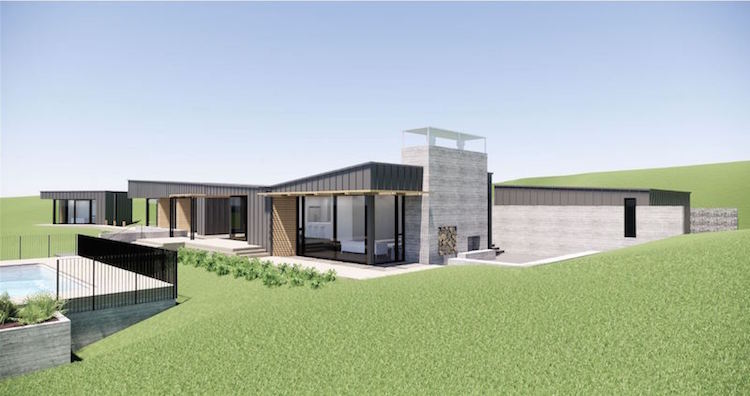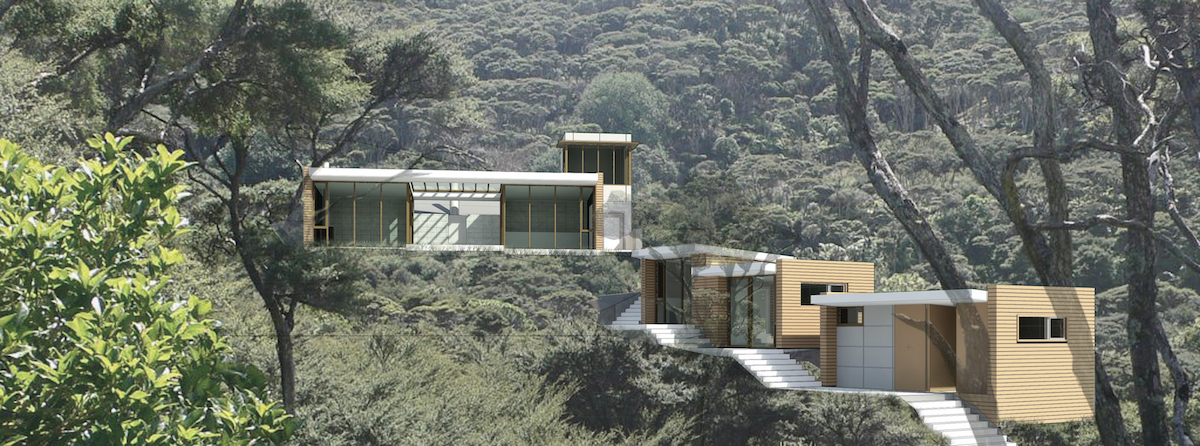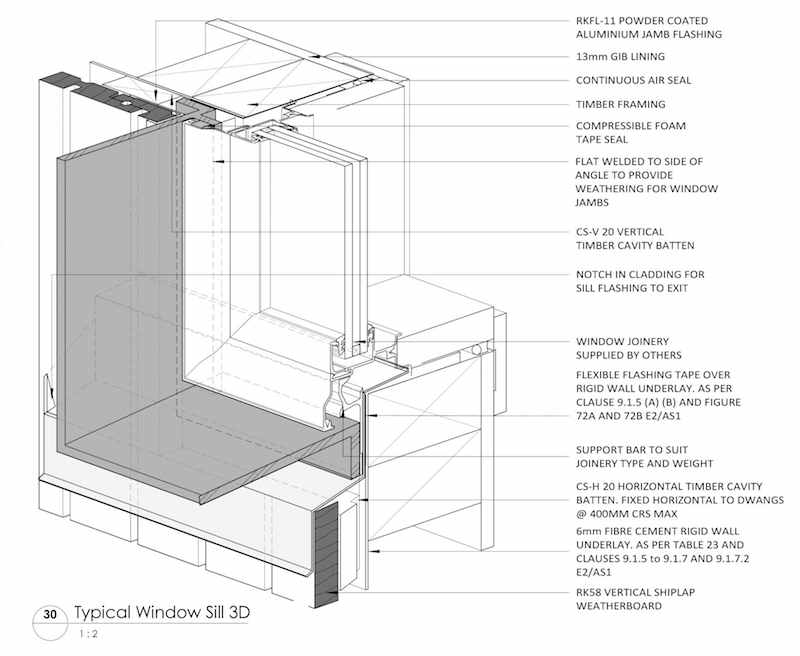
As a young business in 2001, HMOA (then called HMA) was the first architectural practice in New Zealand to adopt the modelling software, Revit—a move that raised eyebrows.
It’s 20 years since the first version of Revit (now known as Autodesk Revit) was launched and 19 years since HMOA pioneered its development in New Zealand. Director John Melhuish remembers his peers being baffled by the decision.

It’s never just about the technology. It’s about people, experience and skill-set. I’ve had the pleasure of working with some of the best architects and could count on one hand those I’d want to work for. John Melhuish was one of them.
Why is Revit so Good?
Revit is a parametric modelling system, which means making changes is easy—if you change one aspect of a design, all other components immediately adjust in line with that decision. For example if you want to move the roof, the attached walls move with it.
Revit is used during every phase of an HMOA project to help manage and communicate a building: planning, construction and post-construction. It allows the architect to explain the project in 3D to both clients and builders.
For residential projects, the 3D modelling means clients can easily visualise their new home, even getting to walk through their house using HMOA’s VR goggles.
“Another advantage is that parametric modelling can be done in the same way you build a real project: foundation, floor, walls, roof ..." says HMOA Associate, Steph Gardner, now coordinates Revit within the practice, “In the early days, Revit was one of the first to allow several people to work on the same project at once. You could also 'link' models to minimise file size. This was actually a really big deal when computer processing power was an issue."
Back in early 2000s, not many firms used modelling software. For HMA to take this leap of faith, to be the first in the country to take on Revit, which was unknown—it was very brave," Steph Gardner
When selecting modelling software, you commit to a long-term relationship. Not only is it a significant financial investment, you also commit to the software structure. For decades to come, you have to make this structure work for your business”.
“The team at HMA took a risk but they were smart and savvy in how they chose to use Revit,” Phil says. “Instead of trying to do everything with it, they had a very interesting and elegant workflow. Back then, Revit hadn’t yet developed its multiuser workflow but clever people always find a way–they don’t wait for technology to catch up and become a commodity.”
Revit for the Future
“What I saw in Revit in 2000 is what I see now, and it remains unique," says Phil, who has even written books on Revit and now has his own consultancy, Read Thomas. He points out that HMOA were also early adopters of the rendering and VR tool, Enscape, "right tools + right team," he says.
Steph says that 20 years on from its first release, Revit just gets better. “Under the beast that is Autodesk, Revit has just kept improving to be the one-stop-construction-shop”. Autodesk has developed other versions of Revit, it’s no longer just for architects.
“HMOA’s early decision to take on Revit set it apart”, says Steph, “I think it also shaped how HMOA developed its culture of collaboration, not only within our studios, but with other consultants, and clients. HMOA truly collaborates, it’s never a one way discussion.”
They thought Max and I were taking a huge risk.
It all began when an American tech consultant from Charlotte, North Carolina walked into the Wellington studio and met John, who was wearing socks and sandals.
Well, that’s what Phil Read says, “I was visiting architects all over the New Zealand as part of a Revit training and support tour. What I remember about HMA wasn’t just a beautiful attention to detail and a wonderful and caring team but that John was wearing socks and sandals. It was a very laid-back affair!”
Clarification from John: he was probably wearing sandals, but definitely not with socks.
At the time of Phil’s visit, HMA was starting to expand and Max and John had begun researching well-known modelling options like Vectorworks and Archicad. They had never even heard of Revit.
“In 2001, HMA wasn’t even using 2D-CAD. They were only hand-drafting”, says Phil, "I remember they would draw the most beautiful details by hand on post-it notes, inking these elegant details and pasting them on top of the detail-views that had been created in Revit, I thought this was amazing. It was the best of both worlds. HMA just wanted to create elegant buildings."
John was working on the Silverscreen film studio project in Auckland with young graduate Jason Whiteley. John remembers that Phil sat down with Jason and together they modelled up Silverscreen on Revit 'in no time at all'.
"It also meant there was no stressful transition from CAD or any other existing tool. They went straight to Revit,” says Phil.
When you change something in Revit, you understand the implications of that decision on the rest of the design,” Stephanie Gardner
How did Phil Read come to be flying around the world championing Revit?
“After graduating from architecture school in 2000, I was researching 3D-CAD tools to buy for my own use. All the tools I looked at had a convoluted workflow—you would model in 3D and then export the 2D drawings to another environment where you would do documentation. They were unwieldy and clunky.
Then I heard about a new tool called Revit so I drove up to a tech conference in Washington DC and was sold! The technology was beautiful. Nine months later I was part of Revit’s consulting team, I worked with early adopters, training them to use Revit properly. It was a progressive environment and I worked under two really wonderful people, Hunter Marston and David Heaton.”
HMOA’s early decision to take on Revit set it apart

